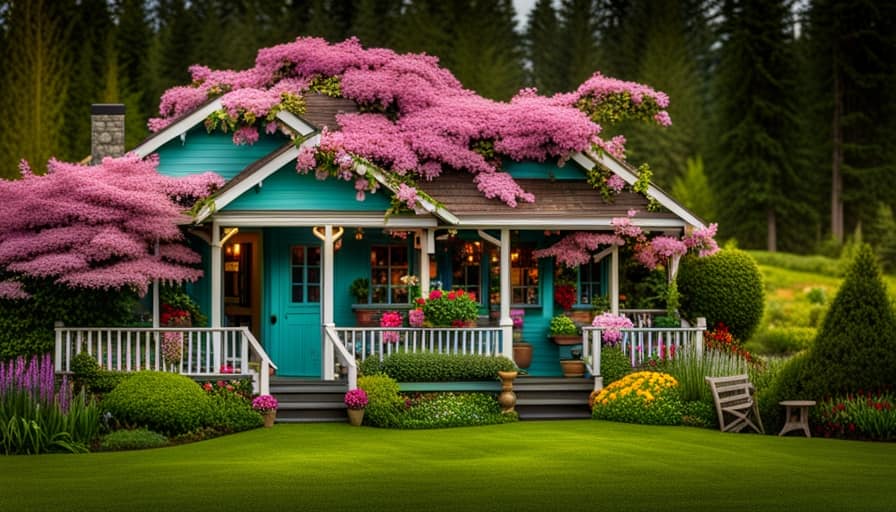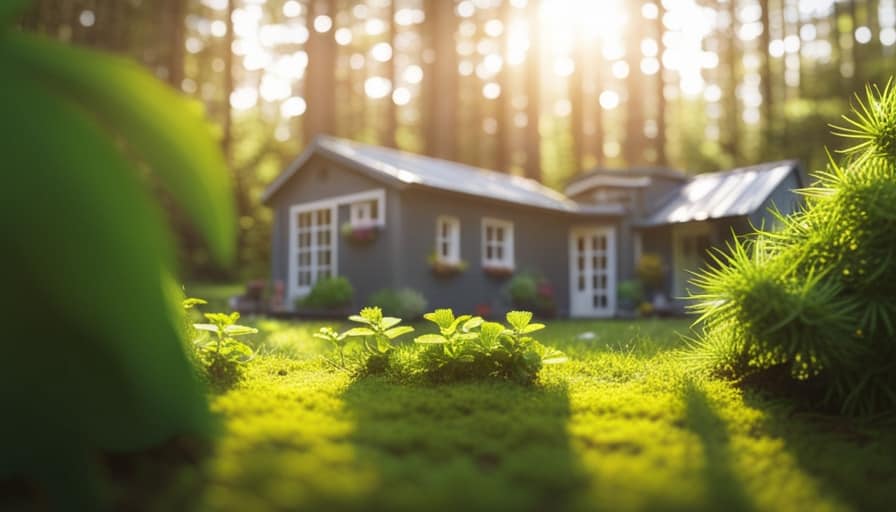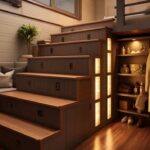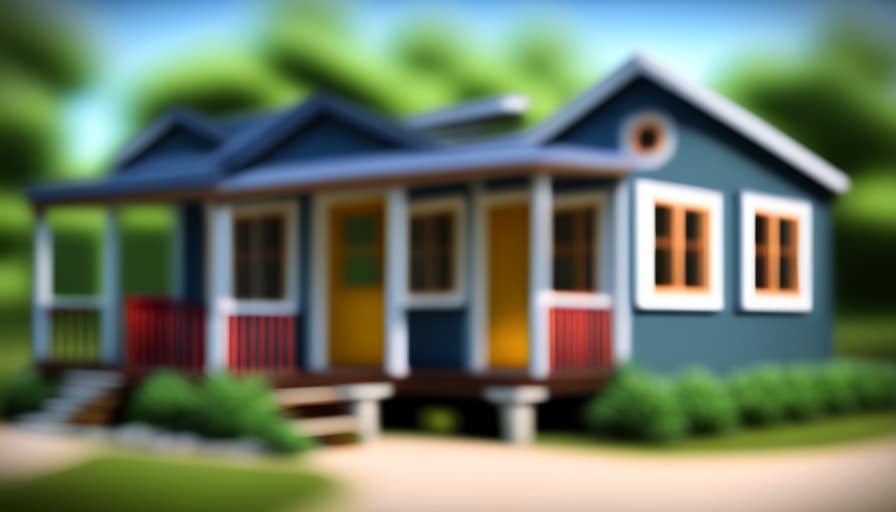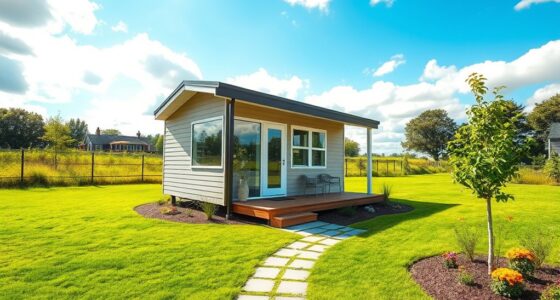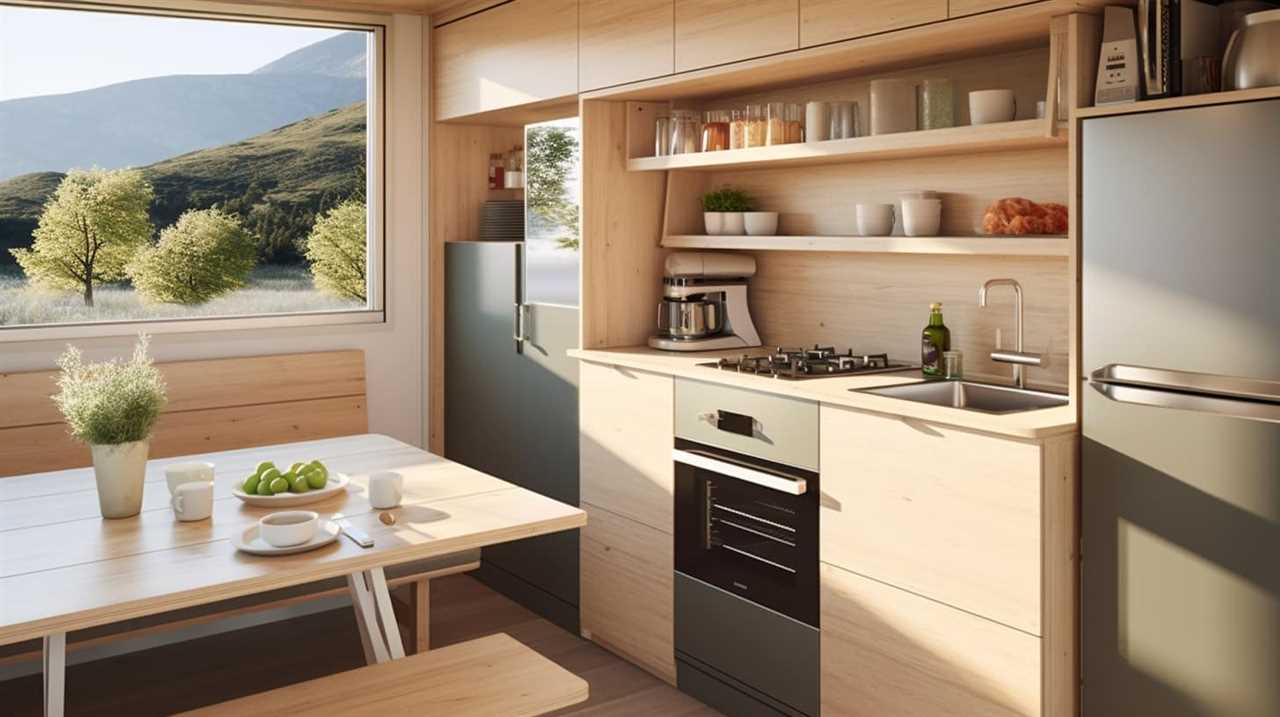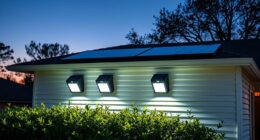Prepare to be impressed by our top 10 interior designs for small houses!
We’ve scoured the world of design to bring you the most innovative and creative ideas for maximizing space and creating a cozy haven in even the smallest of homes.
From smart storage solutions to clever bathroom designs, we’ve got you covered.
So grab a cup of tea, sit back, and let us inspire you with our expertly curated list of tiny house designs that are sure to leave you in awe.

Key Takeaways
- Incorporate hidden compartments and secret drawers to maximize space and functionality
- Utilize space-saving furniture solutions such as loft beds with built-in storage and foldable dining tables
- Optimize the available space with innovative designs and clever storage solutions
- Create a cozy and inviting atmosphere with warm color palettes, plush textiles, and ambient lighting
Maximizing Space With Smart Storage Solutions
We love using clever storage solutions to make the most of the limited space in our tiny houses. When designing the interior of a tiny house, smart organization is key. We want to maximize every inch of space available to us.
That’s why we incorporate hidden compartments into our designs. These hidden compartments serve a dual purpose – they provide additional storage while also maintaining a clean and clutter-free aesthetic. From secret drawers under the stairs to hidden cabinets in the walls, we ensure that every nook and cranny is utilized.
This not only allows for more storage space but also creates a sense of intrigue and discovery within the tiny house. Our goal is to create functional and efficient living spaces that serve the needs of our audience, and smart storage solutions are a crucial part of achieving that.
Incorporating Minimalist Design Elements
When designing our tiny houses, we aim to incorporate minimalist design elements that create a sense of openness and simplicity. To achieve this, we consider the following minimalist decor ideas:

- Decluttering: We prioritize functionality by eliminating unnecessary items and keeping only the essentials.
- Clean lines: We opt for furniture and accessories with clean, sleek lines to create a streamlined look.
- Neutral color schemes: We choose minimalist color schemes like whites, grays, and earth tones to create a calm and cohesive atmosphere.
- Natural materials: We incorporate materials like wood, stone, and metal to bring in a touch of nature and add warmth to the space.
Utilizing Multifunctional Furniture for Versatility
To maximize the functionality of our tiny houses, we carefully select and incorporate multifunctional furniture, allowing us to make the most of our limited space. Multifunctional furniture design ideas are essential in creating a practical and versatile interior.
We understand the importance of space-saving furniture solutions that can serve multiple purposes, such as a sofa that can transform into a bed or a coffee table that doubles as a storage unit. These innovative designs not only optimize the available space but also add a touch of creativity and uniqueness to our tiny houses.
Creating a Cozy and Inviting Atmosphere
To achieve a cozy and inviting atmosphere, a warm color palette and plush textiles can be incorporated into the interior design. By creating a warm ambiance, you can transform your tiny house into a comfortable and welcoming space. Here are a few tips to help you achieve this:
- Choose colors like warm neutrals, soft pastels, or earthy tones to create a cozy feel.
- Incorporate plush textiles such as fluffy rugs, cozy blankets, and soft pillows to add warmth and comfort.
- Utilize small scale furniture that’s both functional and comfortable, ensuring that it fits well within the limited space.
- Add ambient lighting with warm-toned bulbs or string lights to create a cozy and intimate atmosphere.
By following these suggestions, you can create a cozy and inviting atmosphere in your tiny house, making it a place where you can relax and unwind.
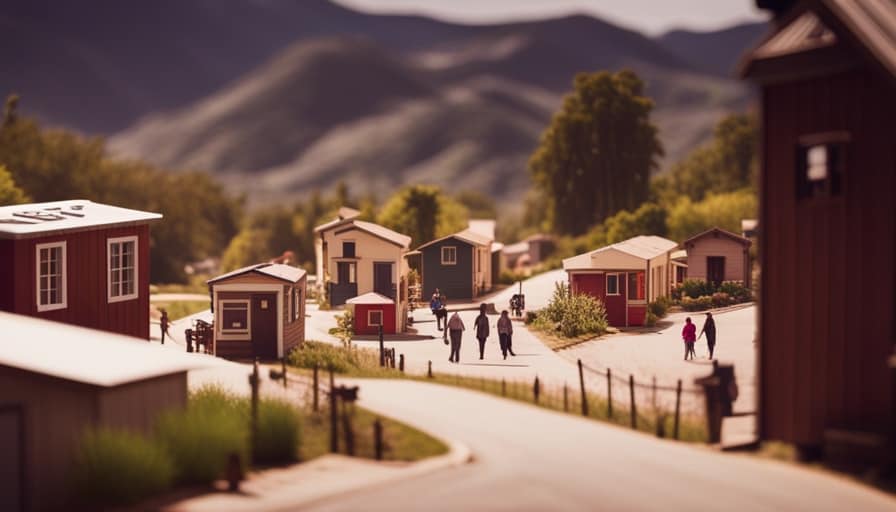
Now, let’s move on to the next section and explore how embracing natural light and open floor plans can further enhance your tiny house design.
Embracing Natural Light and Open Floor Plans
As we explore the concept of embracing natural light and open floor plans, we can see how these design elements can transform a tiny house into a bright and spacious living space. Incorporating natural materials and strategic window placement are key factors in achieving this effect.
By using materials such as wood, stone, and bamboo, we can create a warm and inviting atmosphere while also promoting sustainability. Window placement plays a crucial role in maximizing natural light and creating a sense of openness.
Large windows strategically positioned throughout the house allow for ample sunlight to flood in, making the space feel larger and more airy. Additionally, the open floor plan design eliminates unnecessary barriers, creating a seamless flow between rooms and maximizing the sense of space.
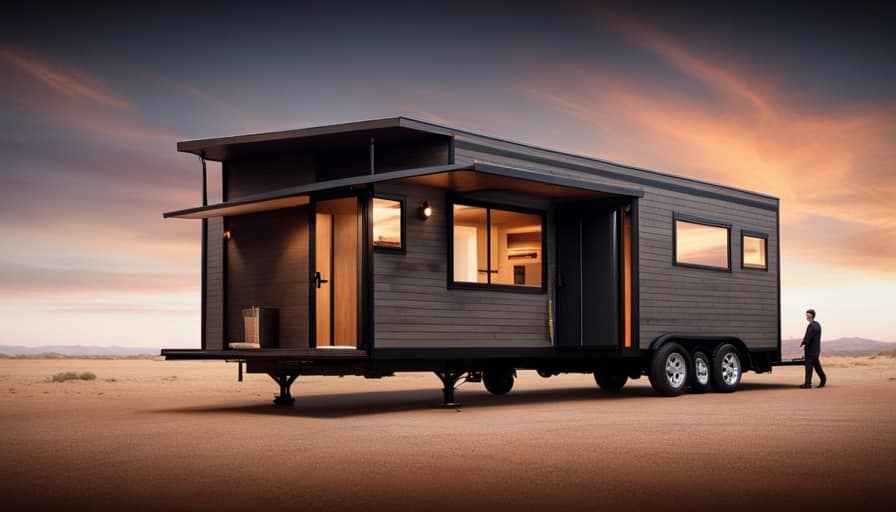
Embracing natural light and open floor plans not only enhances the aesthetic appeal of a tiny house but also creates a more functional and enjoyable living environment.
Adding Unique Architectural Features for Visual Interest
When it comes to designing tiny houses, we’ve discovered some creative space-enhancing techniques and unconventional design elements that can add a unique touch and visual interest to the overall architecture.
These architectural features not only make the space feel larger but also create a sense of whimsy and personality.
From built-in bookshelves that double as staircases to skylights that flood the room with natural light, these design elements can truly transform a tiny house into a captivating and inspiring space.
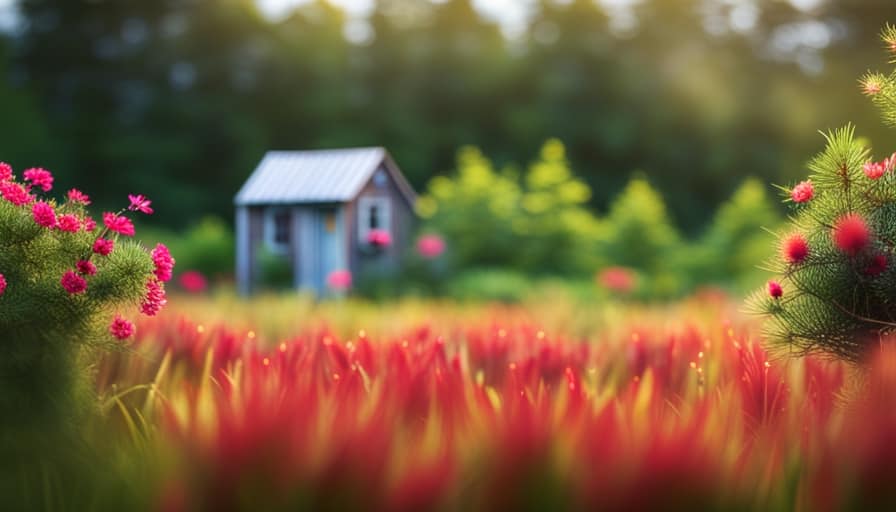
Creative Space-Enhancing Techniques
One of the most effective ways to enhance space and add visual interest to our tiny houses is by incorporating unique architectural features. Here are some creative space-enhancing techniques that can make a big difference in our small living spaces:
-
Multi-functional furniture: Investing in space-saving furniture that serves multiple purposes, such as a sofa that can transform into a bed or a coffee table with built-in storage, can maximize the usability of our limited space.
-
Innovative room dividers: Instead of traditional walls, using innovative room dividers like sliding panels, bookshelves, or curtains can create separate areas within our tiny houses while still maintaining an open and spacious feel.
-
Lofted sleeping areas: By utilizing vertical space, we can create lofted sleeping areas that free up valuable floor space for other activities. This not only adds visual interest but also maximizes the functionality of our tiny houses.

-
Built-in storage solutions: Incorporating built-in storage solutions, such as under-stair storage or wall-mounted shelves, can help us declutter and keep our tiny houses organized, making the most of every inch of space.
Unconventional Design Elements
We can add visual interest to our tiny houses by incorporating unconventional design elements, such as unique architectural features and eye-catching details. These elements not only make our small spaces more visually appealing but also create a sense of personality and uniqueness. One way to achieve this is by using unconventional color schemes that go beyond the traditional neutrals. Bold and vibrant colors can bring energy and excitement to a tiny house, making it feel more lively and dynamic. Another way to add visual interest is through innovative furniture designs. Opting for multi-functional furniture pieces that serve multiple purposes can maximize the limited space while adding a touch of creativity and uniqueness to the interior. Incorporating unexpected architectural features and eye-catching details will surely make our tiny houses stand out and leave a lasting impression on anyone who enters.
| Unconventional Color Schemes | Innovative Furniture Designs |
|---|---|
| Bold and vibrant colors | Multi-functional furniture |
| Unexpected color combinations | Space-saving designs |
| Contrasting color accents | Convertible furniture |
| Unique wallpaper patterns | Hidden storage solutions |
| Statement walls | Foldable and collapsible items |
Designing a Functional Kitchen in a Tiny Space
When it comes to designing a functional kitchen in a tiny space, maximizing counter space is key.
We need to get creative with storage solutions to make the most of every inch.
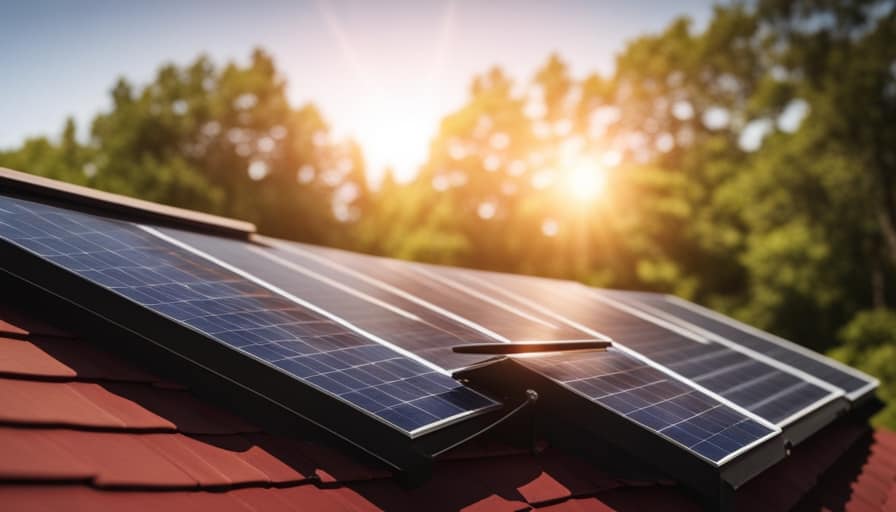
From utilizing vertical space with shelves and hooks to incorporating multi-purpose furniture, there are plenty of ways to optimize the kitchen area and ensure it remains functional and efficient.
Maximizing Counter Space
Let’s explore how to create a functional kitchen in a tiny space by maximizing counter space. In small kitchen design, every inch counts. Here are some organizing tips to help you make the most of your limited counter space:
-
Utilize wall-mounted shelves or hanging racks to store frequently used items, such as pots, pans, and utensils. This frees up valuable counter space and keeps everything within reach.
-
Invest in multi-purpose kitchen tools and appliances, like a blender that can also function as a food processor. This will help minimize the number of gadgets taking up precious counter space.
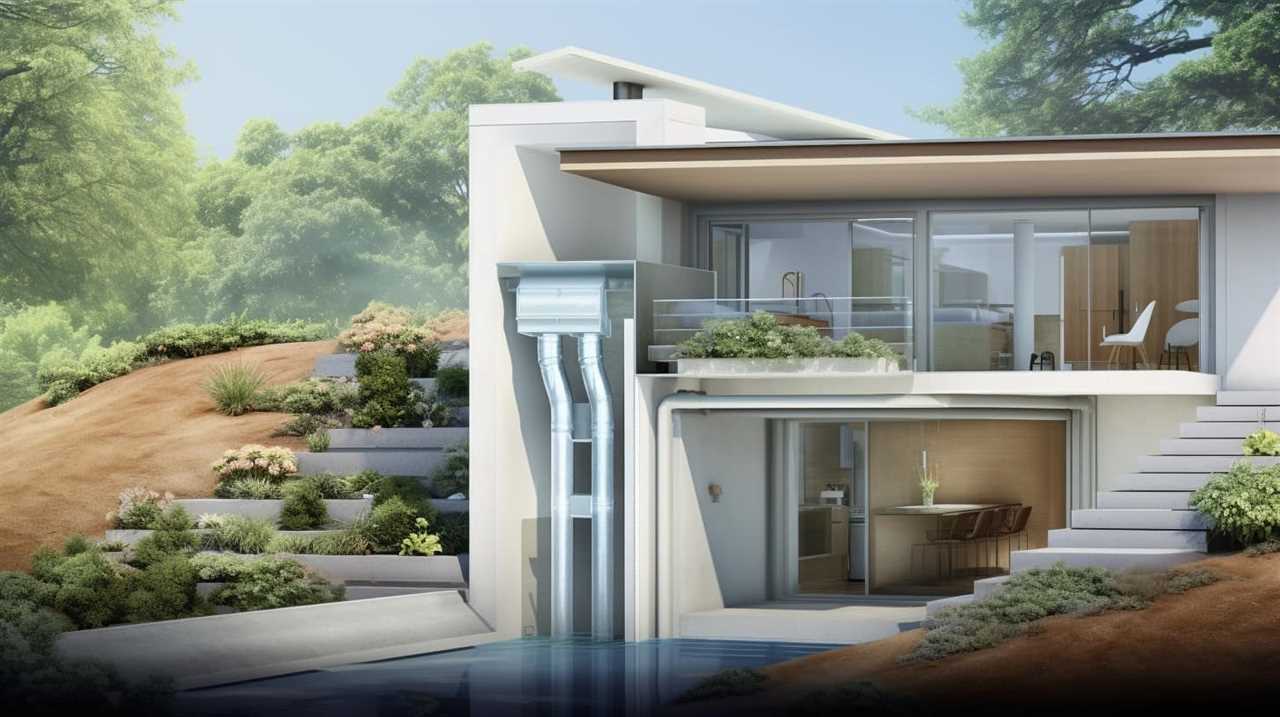
-
Consider installing a fold-down or pull-out countertop extension. This extra surface area can be used for food preparation or as a dining table when needed.
-
Opt for compact, stackable storage containers to maximize vertical space. These containers can be used to store dry goods, spices, and other pantry items.
By implementing these organizing tips, you can create a functional kitchen in your tiny space while maximizing counter space.
Now, let’s move on to the next section and explore some creative storage solutions.
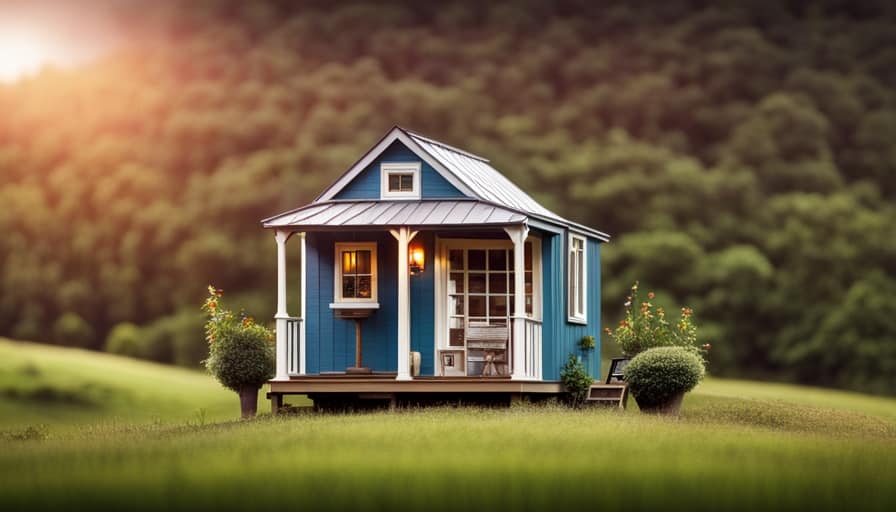
Creative Storage Solutions
But, by utilizing clever storage solutions, we can design a functional kitchen in a tiny space. In a small kitchen, every inch of space counts. That’s why hidden storage is a game-changer.
Consider incorporating pull-out cabinets or drawers under the countertops to maximize storage space while keeping everything within easy reach. Another ingenious solution is to install shelves or racks on the inside of cabinet doors to store spices and utensils. Additionally, investing in space-saving furniture can make a big difference.
Look for tables and chairs that can be folded or stacked when not in use. This way, you can create more room for cooking and meal prep. These creative storage solutions will ensure that your tiny kitchen remains efficient and clutter-free.
Now, let’s move on to incorporating clever bathroom designs for efficiency.
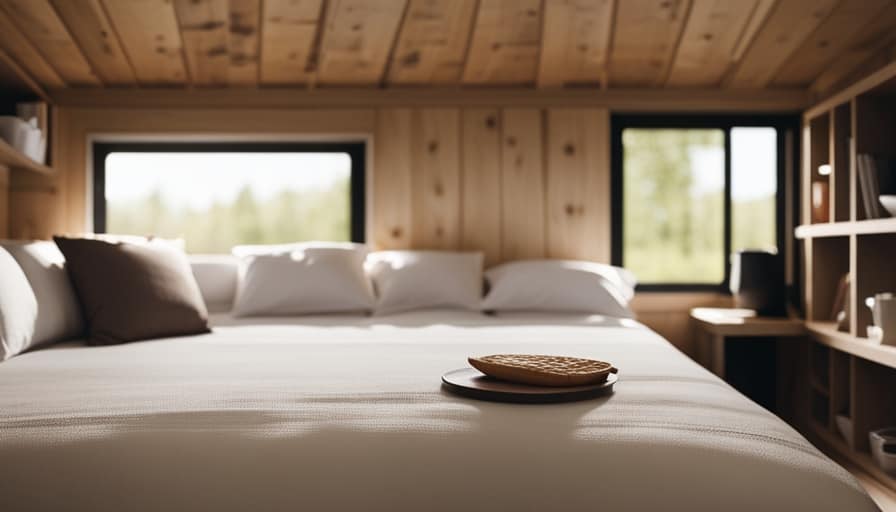
Incorporating Clever Bathroom Designs for Efficiency
We love how compact bathroom fixtures maximize space in tiny houses. When it comes to space-saving bathroom designs, there are plenty of innovative solutions that can make your small bathroom feel spacious and efficient. Here are some clever ideas to incorporate into your tiny house bathroom:
-
Wall-mounted toilets: These toilets are attached to the wall, saving valuable floor space and creating a sleek and minimalist look.
-
Floating vanities: By mounting the vanity on the wall, you can open up the floor space and create an illusion of a larger bathroom.
-
Corner sinks: Placing the sink in the corner of the bathroom allows you to utilize the often-unused corner space effectively.

-
Hidden storage: Utilize the vertical space by incorporating hidden storage solutions like recessed shelves or cabinets behind the mirror.
With these innovative bathroom storage and space-saving designs, you can maximize the functionality and style of your tiny house bathroom.
Creating a Bedroom Retreat in a Small Area
In our quest to design a bedroom retreat in a small area, we discovered the power of utilizing vertical space and incorporating multifunctional furniture.
To create a soothing atmosphere, we focused on creating a soothing color palette that promotes relaxation and tranquility. Soft, neutral tones like pastel blues, calming greens, and warm earthy hues were used to paint the walls and choose bedding and curtains.
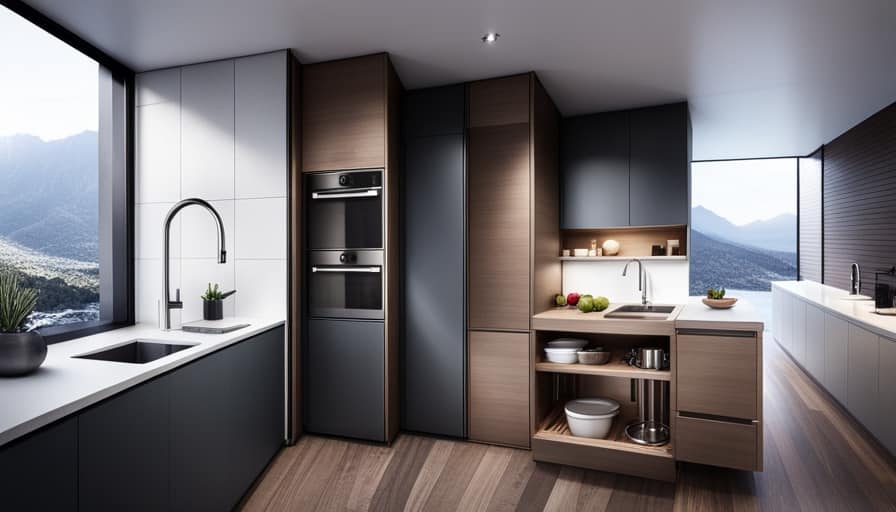
To maximize storage in a small area, we incorporated hidden storage options such as under-bed drawers, built-in shelves, and storage ottomans. This allowed us to keep the space clutter-free and maintain a calm and peaceful environment.
As we move into the next section about using color and texture to enhance small spaces, let’s explore how these elements can further elevate the design of a tiny bedroom retreat.
Using Color and Texture to Enhance Small Spaces
To truly transform a small space, we can utilize color and texture to enhance the overall design. By maximizing visual impact and incorporating unique patterns, we can create a visually stunning and inviting atmosphere. Here are four ways to use color and texture to enhance small spaces:
-
Choose a vibrant accent wall: A bold and vibrant color on one wall can create a focal point and make the room feel larger.
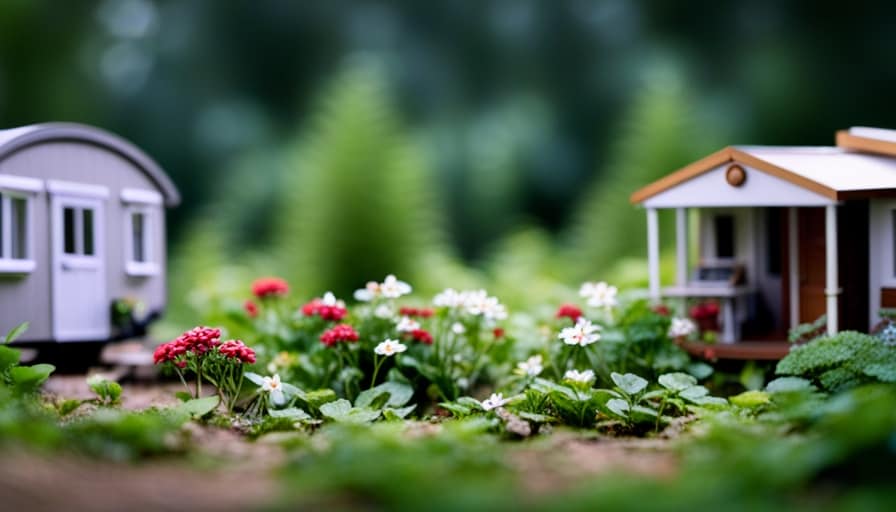
-
Opt for textured wallpaper: Textured wallpaper adds depth and visual interest to a small space, making it feel more dynamic.
-
Use rugs and textiles: Incorporating rugs and textiles with different textures can add warmth and coziness to a small space, while also creating visual interest.
-
Play with patterns: Mixing and matching patterns can add visual excitement and make a small space feel more lively and energetic.
Frequently Asked Questions
How Can I Create a Sense of Privacy in a Tiny House With an Open Floor Plan?
In a tiny house with an open floor plan, we can create a sense of privacy by using curtains or room dividers. Additionally, designing a cozy nook for a private reading corner can enhance the overall comfort and functionality of the space.

What Are Some Innovative Ways to Incorporate Storage Into the Walls of a Tiny House?
Incorporating innovative storage solutions and space-saving furniture into the walls of a tiny house can maximize space and minimize clutter. It’s amazing how much functionality can be hidden within those walls!
How Can I Maximize Natural Light in a Tiny House Without Sacrificing Privacy?
To maximize natural light in our tiny house without sacrificing privacy, we can use sheer curtains or blinds that allow sunlight to filter through while maintaining a sense of seclusion.
What Are Some Creative Ways to Separate Different Areas in a Small Space, Such as a Living Area and a Sleeping Area?
When it comes to separating different areas in a small space, creative room dividers and dual purpose furniture can be game-changers. They not only add functionality but also bring style and personality to your tiny house.
Are There Any Tips for Incorporating Plants Into a Tiny House Design to Bring a Touch of Nature Indoors?
Incorporating greenery into our tiny house design brings a touch of nature indoors. We can create a vertical garden by hanging plants on walls or using shelves. This not only adds beauty but also improves air quality.
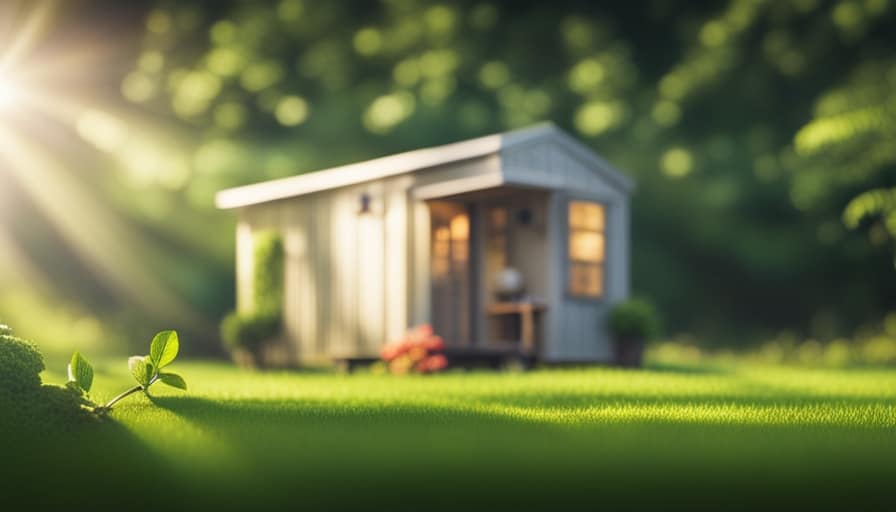
Conclusion
In conclusion, designing a tiny house requires careful thought and consideration to maximize space and create a functional yet inviting home.
While some may argue that small spaces can feel cramped and limiting, the truth is that with the right design elements and smart storage solutions, a tiny house can offer a comfortable and stylish living environment.
By embracing minimalist design, utilizing multifunctional furniture, and incorporating clever designs, you can transform a small space into a cozy and efficient retreat.
Don’t let the size fool you – tiny houses have the potential to be truly inspiring and innovative.

I’m Theodore, and I love tiny houses. In fact, I’m the author of Tiny House 43, a book about tiny houses that are also tree houses. I think they’re magical places where imaginations can run wild and adventures are just waiting to happen.
While tree houses are often associated with childhood, they can be the perfect adult retreat. They offer a cozy space to relax and unwind, surrounded by nature. And since they’re typically built on stilts or raised platforms, they offer stunning views that traditional homes simply can’t match.
If you’re looking for a unique and romantic getaway, a tree house tiny house might just be the perfect option.
